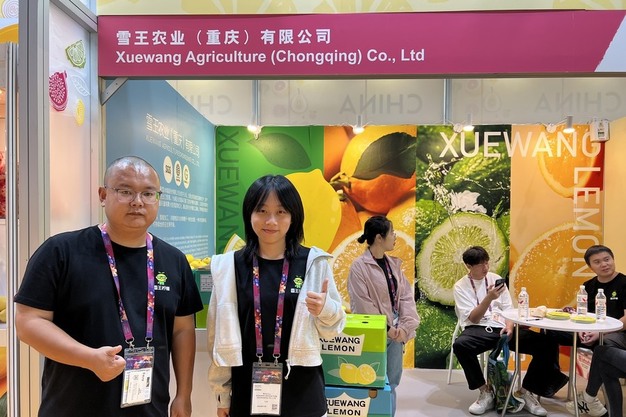The Asia Fruit Logistica Exhibition, held from September 3 to 5 in Hong Kong, concluded successfully. The event attracted more than 760 companies from 43 countries, with China once again leading the way with over 300 exhibitors. After disruptions caused by typhoons in the past two years, this year's edition benefited from clear skies and favorable conditions throughout the three-day show.
Chinese exhibitors expressed general satisfaction with the event, particularly the booth arrangements and visitor quality. Compared with Fruit Logistica in Berlin, Chinese companies enjoyed more prominent booth placements, which facilitated interaction with clients. Many exhibitors praised the number and quality of visitors on the opening day. Although the second day was less busy, overall visitor traffic and engagement were considered positive. The final day saw lighter traffic, with many exhibitors visiting each other and beginning to dismantle booths in the afternoon.
As in previous years, leading brands showcased large, custom-built stands. Reemoon displayed multiple models of its sorting machines, with its latest fully automated intelligent packaging system drawing particular attention. Booths from major players such as Joy Wing Mau, Dole, and Pagoda also attracted a steady stream of visitors.
 © Ning Fan | FreshPlaza.com
© Ning Fan | FreshPlaza.com
Beyond booth activities, more Chinese companies are integrating traditional cultural elements into their packaging designs, such as depictions of figures in ancient attire, aiming to capture the interest of international consumers.
 © Ning Fan | FreshPlaza.com
© Ning Fan | FreshPlaza.com
 © Ning Fan | FreshPlaza.com
© Ning Fan | FreshPlaza.com
Food safety standards were highlighted as a key factor in global trade, with exhibitors emphasizing the importance of improving product safety and quality to attract international buyers and maintain market competitiveness.
 © Ning Fan | FreshPlaza.com
© Ning Fan | FreshPlaza.com
Retail leaders commented that after years of building recognition overseas, their brands now enjoy solid reputations with international buyers. Looking ahead, they plan to invest more in the domestic market by strengthening awareness among local consumers. Many brands are increasing promotion on platforms such as RedNote and Douyin to boost consumer engagement at home.
 © Ning Fan | FreshPlaza.com
© Ning Fan | FreshPlaza.com
Next to blueberries, several Yunnan avocado companies, many first-time exhibitors, also presented their products. One exhibitor explained that locally grown avocados first reached the market two years ago in small volumes but were well received. Thanks to shorter transport times, Yunnan avocados taste fresher than imports from South America, do not require artificial ripening or preservatives, and have a longer shelf life. As the trees mature, yields are increasing, attracting more companies to the sector.
Cherry tomatoes were another highlight, with exhibitors presenting a range of varieties. Favorable climates in provinces such as Gansu and Yunnan have supported greenhouse cultivation of imported varieties, contributing to growing market diversity.
 © Ning Fan | FreshPlaza.com
© Ning Fan | FreshPlaza.com
 © Ning Fan | FreshPlaza.com
© Ning Fan | FreshPlaza.com
